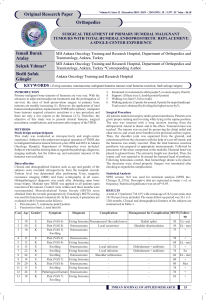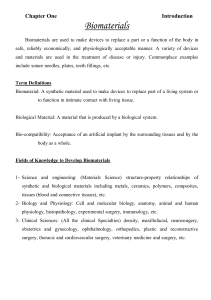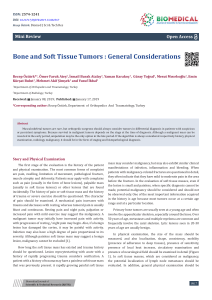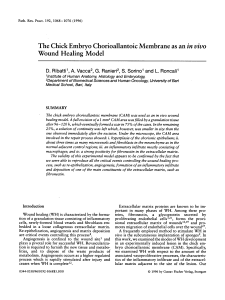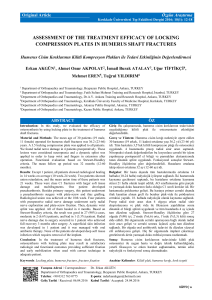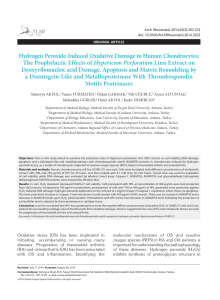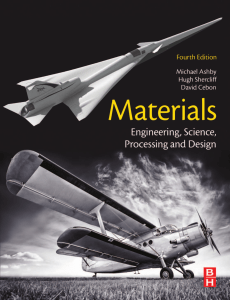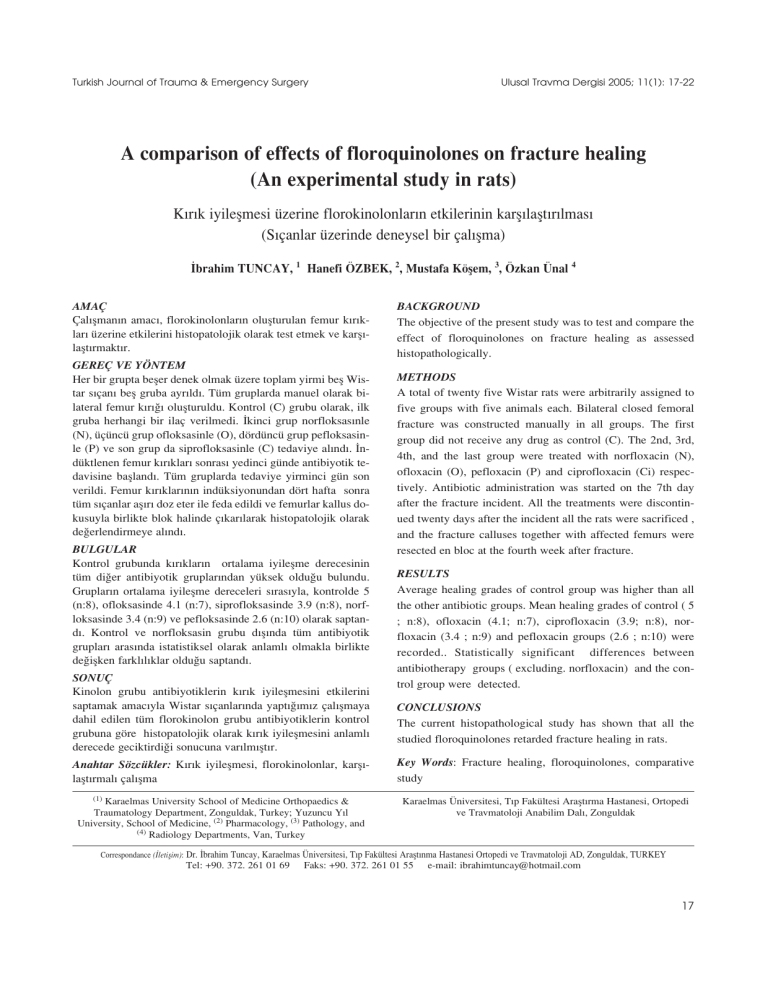
Turkish Journal of Trauma & Emergency Surgery
Ulusal Travma Dergisi 2005; 11(1): 17-22
A comparison of effects of floroquinolones on fracture healing
(An experimental study in rats)
K›r›k iyileflmesi üzerine florokinolonlar›n etkilerinin karfl›laflt›r›lmas›
(S›çanlar üzerinde deneysel bir çal›flma)
‹brahim TUNCAY, 1 Hanefi ÖZBEK, 2, Mustafa Köflem, 3, Özkan Ünal 4
AMAÇ
Çal›flman›n amac›, florokinolonlar›n oluflturulan femur k›r›klar› üzerine etkilerini histopatolojik olarak test etmek ve karfl›laflt›rmakt›r.
GEREÇ VE YÖNTEM
Her bir grupta befler denek olmak üzere toplam yirmi befl Wistar s›çan› befl gruba ayr›ld›. Tüm gruplarda manuel olarak bilateral femur k›r›¤› oluflturuldu. Kontrol (C) grubu olarak, ilk
gruba herhangi bir ilaç verilmedi. ‹kinci grup norfloksas›nle
(N), üçüncü grup ofloksasinle (O), dördüncü grup pefloksasinle (P) ve son grup da siprofloksasinle (C) tedaviye al›nd›. ‹ndüktlenen femur k›r›klar› sonras› yedinci günde antibiyotik tedavisine baflland›. Tüm gruplarda tedaviye yirminci gün son
verildi. Femur k›r›klar›n›n indüksiyonundan dört hafta sonra
tüm s›çanlar afl›r› doz eter ile feda edildi ve femurlar kallus dokusuyla birlikte blok halinde ç›kar›larak histopatolojik olarak
de¤erlendirmeye al›nd›.
BULGULAR
Kontrol grubunda k›r›klar›n ortalama iyileflme derecesinin
tüm di¤er antibiyotik gruplar›ndan yüksek oldu¤u bulundu.
Gruplar›n ortalama iyileflme dereceleri s›ras›yla, kontrolde 5
(n:8), ofloksasinde 4.1 (n:7), siprofloksasinde 3.9 (n:8), norfloksasinde 3.4 (n:9) ve pefloksasinde 2.6 (n:10) olarak saptand›. Kontrol ve norfloksasin grubu d›fl›nda tüm antibiyotik
gruplar› aras›nda istatistiksel olarak anlaml› olmakla birlikte
de¤iflken farkl›l›klar oldu¤u saptand›.
SONUÇ
Kinolon grubu antibiyotiklerin k›r›k iyileflmesini etkilerini
saptamak amac›yla Wistar s›çanlar›nda yapt›¤›m›z çal›flmaya
dahil edilen tüm florokinolon grubu antibiyotiklerin kontrol
grubuna göre histopatolojik olarak k›r›k iyileflmesini anlaml›
derecede geciktirdi¤i sonucuna var›lm›flt›r.
Anahtar Sözcükler: K›r›k iyileflmesi, florokinolonlar, karfl›laflt›rmal› çal›flma
(1)
Karaelmas University School of Medicine Orthopaedics &
Traumatology Department, Zonguldak, Turkey; Yuzuncu Y›l
University, School of Medicine, (2) Pharmacology, (3) Pathology, and
(4) Radiology Departments, Van, Turkey
BACKGROUND
The objective of the present study was to test and compare the
effect of floroquinolones on fracture healing as assessed
histopathologically.
METHODS
A total of twenty five Wistar rats were arbitrarily assigned to
five groups with five animals each. Bilateral closed femoral
fracture was constructed manually in all groups. The first
group did not receive any drug as control (C). The 2nd, 3rd,
4th, and the last group were treated with norfloxacin (N),
ofloxacin (O), pefloxacin (P) and ciprofloxacin (Ci) respectively. Antibiotic administration was started on the 7th day
after the fracture incident. All the treatments were discontinued twenty days after the incident all the rats were sacrificed ,
and the fracture calluses together with affected femurs were
resected en bloc at the fourth week after fracture.
RESULTS
Average healing grades of control group was higher than all
the other antibiotic groups. Mean healing grades of control ( 5
; n:8), ofloxacin (4.1; n:7), ciprofloxacin (3.9; n:8), norfloxacin (3.4 ; n:9) and pefloxacin groups (2.6 ; n:10) were
recorded.. Statistically significant differences between
antibiotherapy groups ( excluding. norfloxacin) and the control group were detected.
CONCLUSIONS
The current histopathological study has shown that all the
studied floroquinolones retarded fracture healing in rats.
Key Words: Fracture healing, floroquinolones, comparative
study
Karaelmas Üniversitesi, T›p Fakültesi Araflt›rma Hastanesi, Ortopedi
ve Travmatoloji Anabilim Dal›, Zonguldak
Correspondance (‹letiflim): Dr. ‹brahim Tuncay, Karaelmas Üniversitesi, T›p Fakültesi Araflt›nma Hastanesi Ortopedi ve Travmatoloji AD, Zonguldak, TURKEY
Tel: +90. 372. 261 01 69
Faks: +90. 372. 261 01 55
e-mail: [email protected]
17
Ulusal Travma Dergisi
INTRODUCTION
Table 1: The histological grading
Floroquinolones are highly potent antibacterial
agents with a broad spectrum of activity including
high potency against gram-negative bacteria.
Application of these drugs in orthopedics has
demonstrated a high level of efficacy with a relative
lack of significant side effects in the prophylaxis and
treatment of bone and joint infections.[1]
Floroquinolones inhibit bacterial cell replication
by inhibiting the bacterial enzyme deoxyribonucleic
acid gyrase, which is a type II topoisomerase.[2]
Even though there are infrequent adverse reactions
associated with their usage, one of the most important concerns is their potential for chondrotoxicity.
This concern has derived mainly from extrapolation
from animal experiments.[3,4] Arthropathy has also
been reported in rare case reports in pediatric and
adult patients.[5,6] Use of floroquinolones in children
is contraindicated because of the adverse effects on
cartilage and bones.[7]
In fracture healing progress, cartilaginous complex plays an important role in both intramembranous and endochondral ossification. Thus cartilaginous complex may potentially share the vulnerability of the chondrocytes in growing juvenile articular
cartilage to fluoroquinolone toxicity. Experimental
delaying of fracture healing with ciprofloxacin has
been demonstrated.[8] However, to our knowledge,
no study with other quinolones has been reported
yet.
The objective of the present study was to test and
compare the effects of floroquinolones on fracture
healing from histopathological point of view.
Grade Histological Evidence
METHODS
A total of twenty-five Wistar rats were arbitrarily assigned to five groups with five animals, and ten
femurs each. After approval of the ethics committee
of the faculty, bilateral closed femoral fractures
were established manually in all groups under intramuscular ketamine hydrochloride (50 mg/kg bodyweight) anesthesia. All the fractures were confirmed
with direct radiography. The first group did not
receive any drug as a control group (C). The second,
third, fourth and the last group were treated with
norfloxacin (N) ofloxacin (O), pefloxacin (P) and
ciprofloxacin (Ci) respectively. The rats were fed a
18
I
II
III
IV
V
VI
VII
VIII
IX
X
XI
XII
XIII
All fibrosis tissue
More fibrosis than cartilaginous tissue
Fibrosis and cartilaginous tissue are almost
equal
Excessive cartilage
More cartilage than fibrosis
Excessive cartilage with minimal woven bone
Cartilaginous tissue and woven bone are almost
equal
Excessive woven bone with minimal cartilage
Excessive woven bone
Excessive woven bone with mature bone
Woven bone and mature bone are almost equal
Excessive mature bone with minimal woven
bone
Excessive lamellar mature bone
standard chow housed in a twelve hours night day
cycle environment and allowed water without
restriction.
Antibiotic administration was started on the 7th
day after fracture. Ciprofloxacin was applied as 50
mg/kg twice a day. The dosages were chosen so as
to achieve peak drug concentrations in rat serum
approximating to those in humans. Groups Ci, P, O
and N received ciprofloxacin (50 mg/kg sc bid),
pefloxacin (40 mg/kg sc bid) ofloxacin (20 mg/kg sc
bid) and norfloxacin (40 mg/kg sc bid) respectively
group C (control) received no treatment. All the
treatments were discontinued at twenty days postfracture and all the rats were sacrificied with an
overdose of ether inhalation. The fracture calluses
together with affected femurs were resected en bloc
at the fourth week after fracture.
All the resected femurs were evaluated with
direct radiography and the segments were placed in
buffered neutral 10% formalin for three days, followed by decalcification with 10% acetic acid.
Specimens placed in paraphin blocs were stained
with both hematoxylene-eosin (HE) and Masson’s
trichrom (MT). A new scale based on the amount of
fibrotic tissue in callus formation, cartilaginous tissue, woven bone and mature bone were used to evaluate the degree of bone healing process (Table 1).
RESULTS
Two specimens from the control, one specimen
from norfloxacin, three from ofloxacin, two from
A Comparison of effects of floroquinolones on fracture healing
Table 2: Average histological grades of the specimens
No
Grade
No
Grade
No
Grade
No
Grade
No
Grade
C1
5
O1
NA
Ci1
3
N1
3
P1
2
C2
3
O2
5
Ci 2
NA
N2
3
P2
3
C3
5
O3
4
Ci 3
3
N3
5
P3
3
C4
5
O4
5
Ci 4
5
N4
3
P4
2
C5
6
O5
4
Ci 5
5
N5
3
P5
3
C6
NA
O6
4
Ci 6
5
N6
3
P6
2
C7
6
O7
3
Ci 7
3
N7
4
P7
3
C8
5
O8
NA
Ci 8
4
N8
3
P8
3
C9
NA
O9
4
Ci 9
3
N9
NA
P9
2
C10
5
O10
NA
Ci10
NA
N10
4
P10
3
NA: not available / Ci: ciprofloxacine / O: ofloxacine / P: perfloxacine / C: control
ciprofloxacin were excluded from the study. Rats
with fractures of metaphysis and those from which
specimens for histopathological examination could
not be obtained were excluded from the study. The
details of the histopathological findings were shown
in table 2.
Average healing grade of the control group was
higher than all the other antibiotic groups. Mean
healing grades of the groups were as follows: control
5 (n:8), ofloxacin 4.1 (n:7), ciprofloxacin 3.9 (n:8),
norfloxacin 3.4 (n:9) and pefloxacin 2.6 (n:10).
(Figure.1)
Histopathological examination of the control
group under lower magnification revealed external
callus formation with subperiostal bone and cartilage. formation. Also endochondral ossification with
vascular invasion of cartilage was seen in calluses
between bone and cartilage. (Figure. 2) Examination
of ofloxacin group also revealed growing patterns of
fibrous tissue in callus. Examination of ciprofloxacin group also revealed growing patterns of
equal fibrous and cartilaginous tissue with excessive
cartilaginous callus formation with a mean healing
degree lower than that of the ofloxacin group. The
results of norfloxacin group were similar to those of
ciprofloxacin group. The degree of healing in
pefloxacin group was quite lower than that of the
other groups. Excessive fibrous tissue with minimal
Healing Degrees
5
4
3
2
1
0
C
O
Ci
N
P
Groups
Figure 1: Mean histological grades of the groups (C: Control,
O: Ofloxacin, Ci: Ciprofloxacin, N: Norfloxacin, P: Pefloxacin)
Figure 2: Callus maturation of control group in fourth week
(HE X 50) (Abbr: c=cartilaginous area, f=fibrous area)
19
Ulusal Travma Dergisi
Figure 3: Differences of thickness and cartilage content maturation specialties in the control (a), ofloxacin (b), ciprofloxacin (c),
norfloxacin (d) and pefloxacin (e) groups. (MT X 125)
Figure 3a
Figure 3c
Figure 3b
Figure 3d
cartilage was observed. Also vascular formation in
fibrous tissue was apparent. (Figure. 3a,b,c,d,e)
During microscopic examination under higher
magnification, endochondral ossification front
revealed more chondrocytic abnormalities in the
antibiotic groups than those of the control group.
These abnormalities included decreased number of
chondrocytes, relatively more immature chondrocytes with various shapes and dimensions. In the
control group, chondrocytes were mature and more
uniform in shape. In the antibiotic group, especially
with pefloxacin, fewer number of chondrocytes with
pleomorphism and immaturity were observed.
Serial sections of the tissue samples stained with
MT revealed that new trabecules had contained
more cartilage in antibiotic groups. Also relative trabecular atrophy and dominancy of cartilage were
apparent in norfloxacin and pefloxacin groups.
20
Figure 3e
Statistical analyses of the groups was performed
with Kruskal Wallis analysis of variance and the difference between experimental groups was assessed
with Mann-Whitney U test. The difference between
the antibiotic groups, and the control group exclud-
A Comparison of effects of floroquinolones on fracture healing
Table 3a: The comparisons of statistical
significance between groups
Groups
Result
C-N
C-O
C-P
C-Ci
N-O
N-P
N-Ci
O-P
O-Ci
P-Ci
p:0.023*
p:0.072
p:0.002*
p:0.015*
p:0.331
p:0.009*
p:0.363
p:0.004*
p:0.109
p:0.065
(*: Statistical significance, p<0.005)
ing norfloxacin was statistically significant.
However variable results were recorded for the differences among antibiotic groups (Table 3a). Means
and standard deviations were shown in table 3b.
DISCUSSION
Floroquinolone group antibiotics are prescribed
commonly for the treatment of urinary tract, soft tissue or other common infections. The adverse effects
of floroquinolones on immature cartilage have been
extensively investigated.[1.9.10.11] The toxic effects of
quinolones tend to occur especially in the larger
weight bearing joints such as the hip and
knee.[11,12,13] Degeneration of the cartilage matrix has
been observed after as few as two oral doses of
ciprofloxacin.[10]
The repair process of the fracture involves development of the cartilaginous complex, which undergoes intramembranous and endochondral ossification similar to those of maturing cartilage of young
animals. Huddleston et al.[8] have studied the toxic
effects of floroquinolon on cartilage in fracture callus in an experimental study. In their study,
ciprofloxacin was compared with cefazolin in rats
with bilateral closed femoral fracture. The results
were evaluated according to histological, radiological and physical examinations. In all examinations,
fracture healing rate was decreased in the
ciprofloxacin group. Histological examination of the
fracture calluses obtained from the ciprofloxacin
treated animals showed progressive formation of
cartilage and subperiostal bone and replacement of
Table 3b: Means ± SDs of the groups
Group
Number
of cases
Mean
SD
8
9
9
10
8
4.0000
3.2222
3.4444
2.4000
3.0000
0.9258
0.4410
0.5270
0.6992
0.5345
C
N
O
P
Ci
(SD.: Standard deviation)
cartilage by endochondral ossification. Besides they
showed decreased number and size of the chondrocytes in the fracture calluses in the ciprofloxacin
group. Also they demonstrated striking electron
microscopic evidence of chondrocyte death in calluses exposed to ciprofloxacin. They expressed that
negative effect is associated with a direct toxic effect
on chondrocytes. This adverse effect on chondrocyte
function then leads to an inefficient conversion of
cartilage to bone, which is manifested by decreased
mechanical properties of the fracture callus.[9] In the
present study, greater number of chondrocytic
abnormalities in antibiotic groups than the control
group comply with these previous results.
Other possible mechanisms include action of
quinolones as a DNA gyrase inhibitor.[14,15,16,17] In
addition to the inhibition of DNA, other possible
mechanisms of quinolone chondrotoxicity include
alterations in DNA synthesis or repair.[3,10,18] The
most pronounced inhibitory effect is related to the
secretion of glycosaminoglycans and collagen components by the chondrocyte matrix Accordingly
Mont et al.[2] stated that ciprofloxacin affects cell
replication in adult human chondrocytes in vitro.
Ciprofloxacin caused a decrease in cell proliferation
as measured by [3H]-thymidine uptake and bromodeoxyuridine labeling where decrease of uptake is
explained by a toxic effect on cells. Also it has been
shown that the quinolones inhibit eukaryotic
deoxyribonucleic acid polymerase alfa and beta terminal deoxyribonucleotidyl transferase activity.[19]
Mont et al.[2] showed that, ciprofloxacin does not
effect synthesis of proteoglycans notably.
Accordingly no obvious effect was noted in
immunocytochemical staining for type I procollagen, type II collagen, keratan sulfate or unsulfated
21
Ulusal Travma Dergisi
chondroit in culture. Stahlman et al.[6] demonstrated
loss of cartilage specific proteoglycans with
ofloxacin.treatment.
The present study has shown that all the studied
floroquinolones inhibit fracture healing. Further
studies will be planned to understand why
pefloxacin has possessed the most dramatic effect.
Therefore quinolone group antibiotics, which are
used widely in clinical practice, should be administered cautiously in orthopedics and traumatology.
REFERENCES
1. Schaad UB, abdus Salam H, Aujard Y, et al.: Use of fluoroquinolones in pediatrics: consensus report of an
International Society of Chemotherapy commission.
Pediat. Infect. Dis. J. 1995; 14: 1-9.
2. Mont MA, Mathur SK, Frondoza CG, et al.: The effects
of ciprofloxacin on human chondrocytes in cell culture.
Infection 1996; 24:151-5.
3. Takada S, Kato M, Takayama S: Comparison of lesions
induced by intra-articular injections of quinolones and
compounds damaging cartilage components in rat
femoral condyles. J. Toxicol. And Environ. Health,
1994; 42: 73-88.
4. Tatsumi H, Senda H, Yatera S, et al.: Toxicological studies on pipemidic acid. V Effect on diarthrodial joints of
experimental animals. J. Toxicol. Sci. 1978; 3: 357-67.
5. Schaad UB, Wedgwood-Krucko J: Nalidixic acid in children: retrospective matched controlled study for cartilage
toxicity. Infection 1987; 15: 165-8.
6. Stahlmann R, Merker HJ, Hinz N, et al.: Ofloxacin in
juvenile non-human primates and rats, arthropathia and
drug plasma concentrations. Arch. Toxicol. 1990; 64:
193-204.
7. Chysky V, Kapila K, Hullmann R, et al. : Safety of
ciprofloxacin in children: worldwide clinical experience
based on compassionate use. Emphasis on joint evaluation. Infection 1991; 19: 289-96.
8. Huddlestone PM, Steckelberg JM, Hanssen AD, et al.:
Ciprofloxacin inhibition of experimental fracture-healing. J. Bone Joint Surg. Am 2000; 82: 161-73.
22
9. Bendele AM, Hulman JF, Harvey AK, et al.: Passive role
of articular chondrocytes in quinolone-induced arthropathy in guinea pigs. Toxicol. Pathol. 1990; 18: 304-12.
10. Burkhardt JE, Hill MA, Carlton WW: Morphologic and
biomechanical changes in articular cartilages of immature beagle dogs dosed with difloxacin. Toxicol. Pathol.
1992; 29: 246-52.
11. Janknegt R: Fluoroquinolones, adverse reactions reactions during clinical trials and postmarketing surveillance. Pharm Weekbl Sci. 1989; 11: 124-7.
12. Burkhardt JE, Hill MA, Turek JJ, et al.: Ultrastructural
changes in articular cartilages of immature beagle dogs
dosed with difloxacin, a fluoroquinolone. Vet Pathol.
1992; 29: 230-8.
13. Kato M, Onodera T: Morphological investigation of cavity formation in articular cartilage induced by ofloxacin
in rats. Fundam Appl. Toxicol. 1997; 11: 110-9.
14. Barrett JF, Gootz TD, McGuirk PR, et al.: Use of in vitro
topoisomerase II assays for studying quinolone antibacterial agents. Antimicrob Agents Chemother. 1989; 33:
1697-703.
15. Castora FJ, Vissering FF, Simpson MV: The effect of
bacterial DNA gyrase inhibitors on DNA synthesis in
mammalian mitochondria. Biochem Biophys. Acta,
1983; 740: 417-27.
16. Enzmann H, Wiemann C, Ahr HJ, et al.: Damage to
mitochondrial DNA induced by the quinolone bay 3118
in embryonic turkey livers. Mutat Res. 1999; 425: 21324.
17. Lawrence JW, Claire DC, Weissig V, et al.: Delayed
cytotoxicity and cleavage of mitochondrial DNA in
ciprofloxacin-treated mammalian cells. Mol Pharmacol.
1996; 50: 1178-88.
18. Burke JF, Duff PM, Pearson CK: Effect of drugs on
deoxyribonucleic acid synthesis in isolated mammalian
cell nuclei. Biochem J. 1979; 178: 621-26.
19. Rusquet R, Bonhommet M, David JC: Quinolone antibiotics inhibit eukaryotic DNA polymerase a and b terminal deoxynucleotidyl transferase but not DNA ligase.
Biochem Biophys Res Commun. 1984; 121: 762-9.



